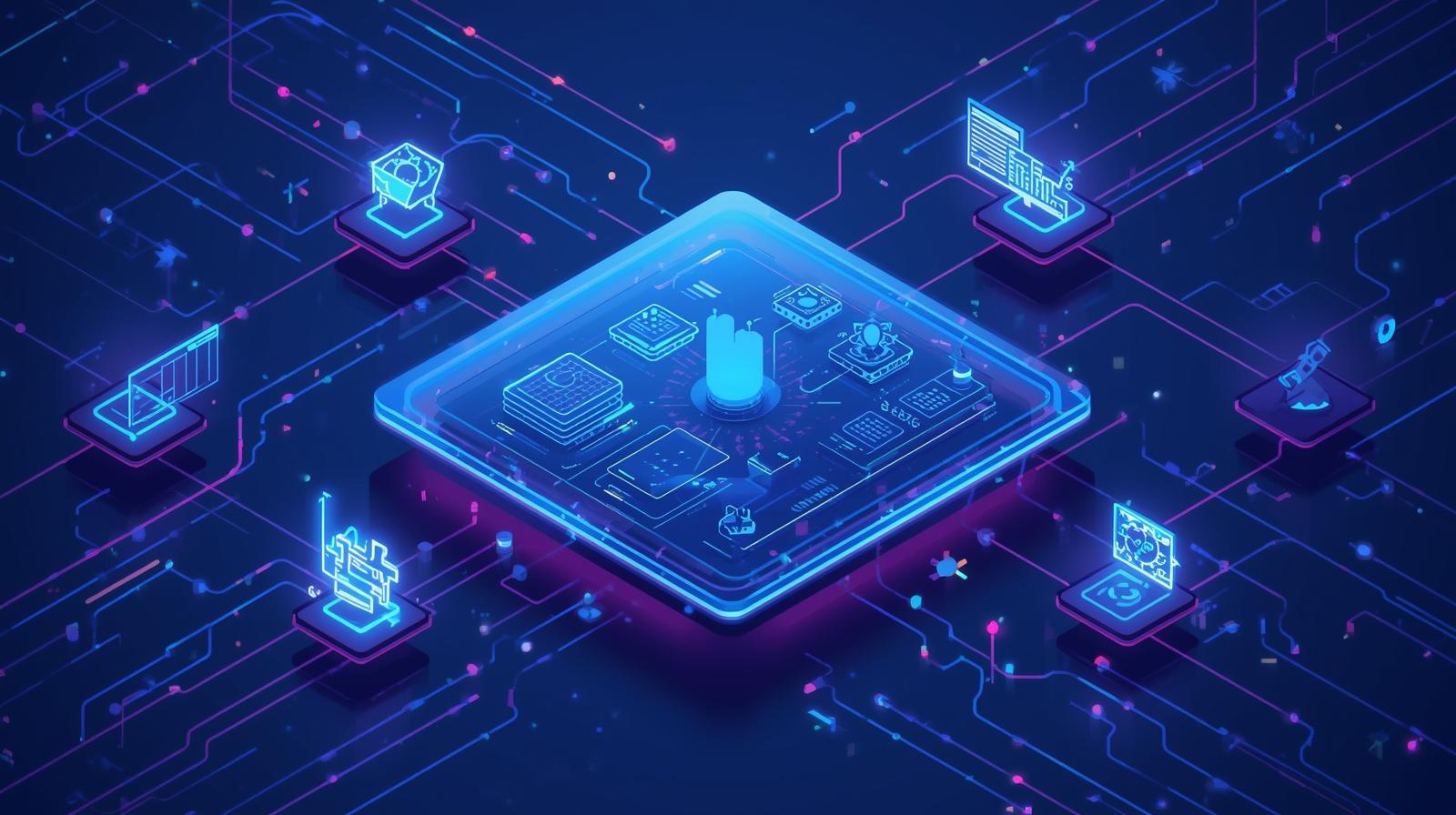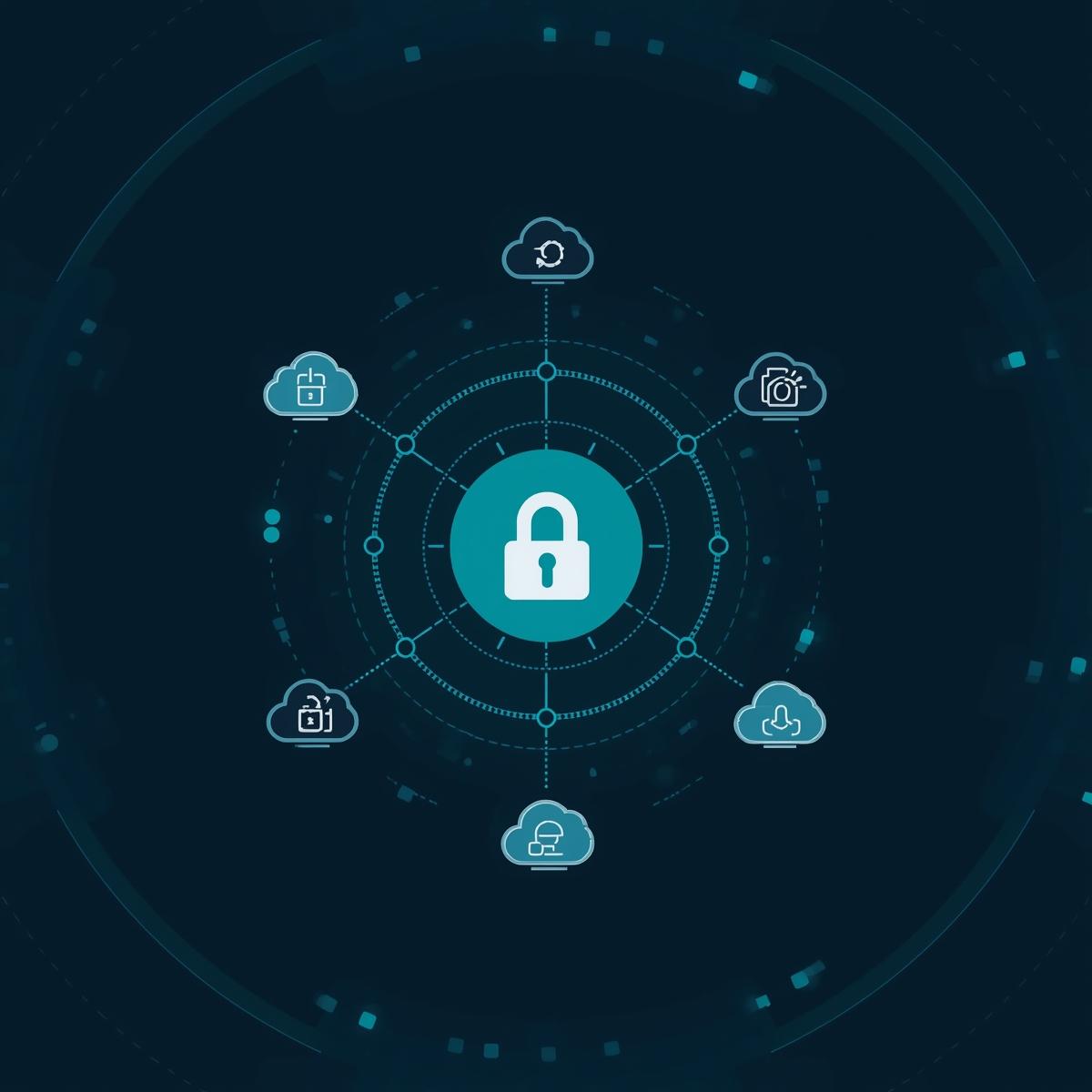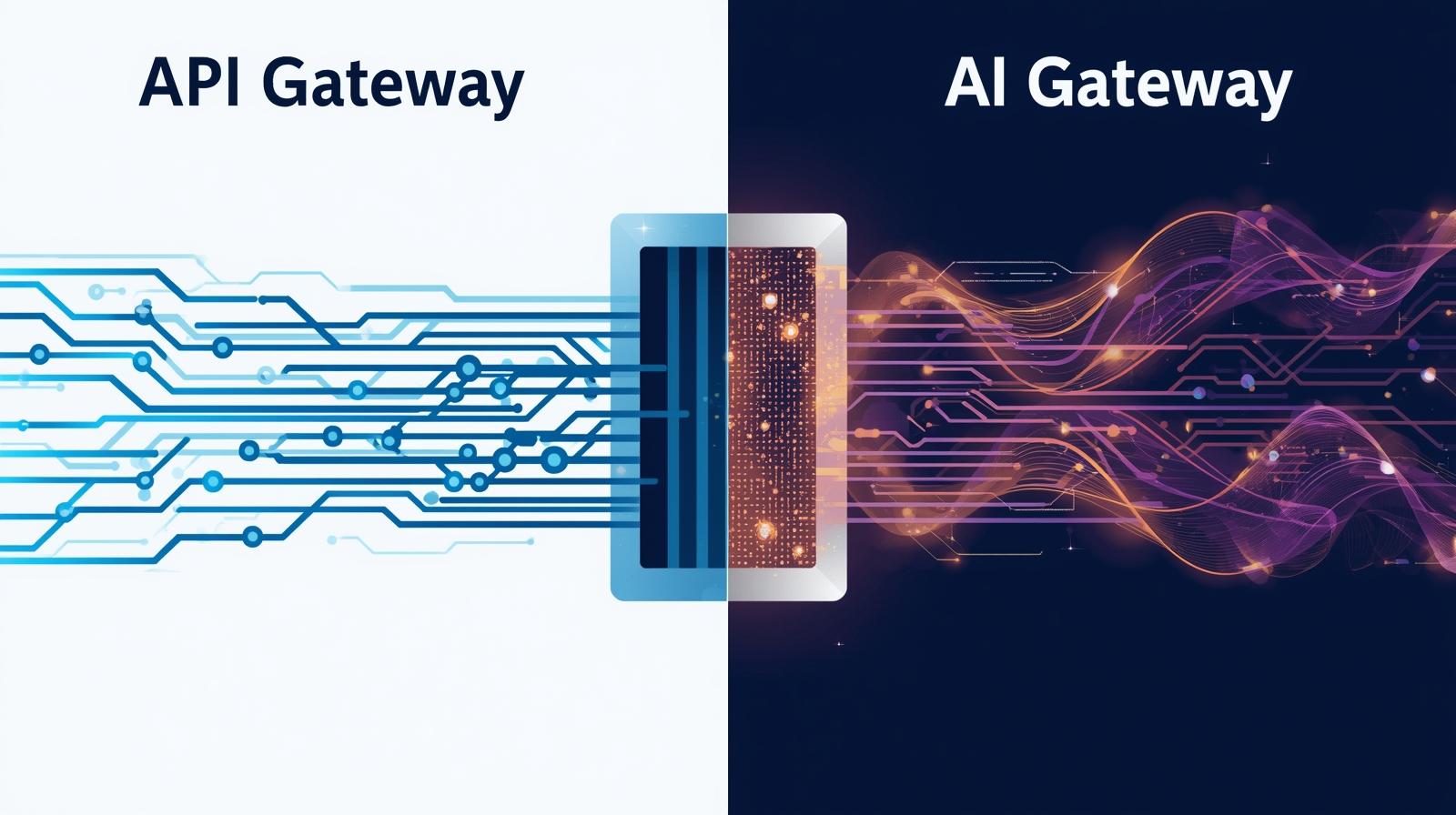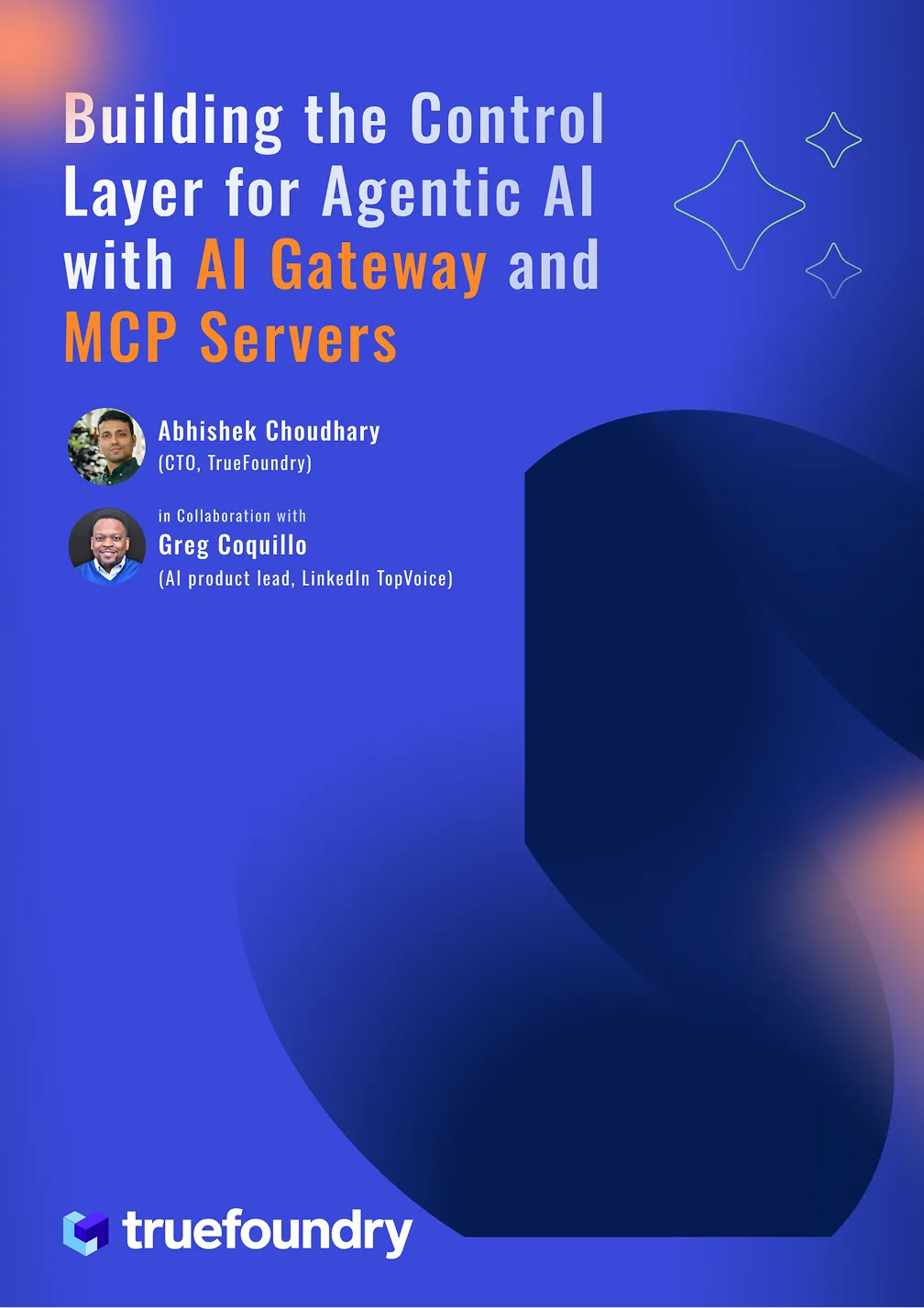How should Enterprises evaluate LLM Gateway for Scale?
Enterprises today are racing to harness the power of large language models (LLMs) in everything from customer service chatbots to advanced analytics pipelines. But as you move beyond proof-of-concepts into production, you’ll quickly discover that calling an LLM directly isn’t enough, especially when your SLAs demand rock-solid performance, tight security, and the flexibility to juggle multiple model providers or bring your own. That’s where an LLM gateway comes in, a thin, purpose-built layer that sits between your applications and the ever-evolving ecosystem of LLM endpoints.
In the sections that follow, we will walk through a five-pillar evaluation framework, covering performance and latency, model flexibility, operational controls, observability, and security compliance, that every enterprise should use before committing to a gateway solution.
What Is an LLM Gateway?
An LLM gateway is a centralized proxy layer that standardizes and manages all interactions between your applications and diverse language model endpoints. Rather than duplicating authentication checks, retry mechanisms, and logging across individual services, you channel every request through this single service. The gateway then dispatches prompts to the appropriate backend, whether an on-premises LLaMA instance, a dedicated OpenAI deployment on Azure, or Amazon Bedrock, abstracting away provider-specific API differences.
Beyond simple request routing, a robust gateway delivers several essential capabilities:
- Authentication & Authorization
TrueFoundry’s LLM Gateway integrates with enterprise identity systems (OIDC/SAML) to validate each incoming request’s credentials. Once authenticated, the gateway applies role‑based access control (RBAC) policies defined in declarative YAML to restrict which users or service accounts can invoke specific models or endpoints. This two‑step process ensures that only authorized actors gain access and that permissions are enforced consistently across your organization.
- Resilience Controls
The gateway enforces configurable rate limits at per‑user, per‑team, and per‑model scopes to prevent traffic surges from overwhelming model hosts. It dynamically distributes requests across replicas using real‑time CPU and latency metrics.
- Observability & Auditing
Captures detailed traces of each prompt and response, including latency metrics and contextual metadata. Logs are stored in a high-performance backend (for example, ClickHouse or S3) and exposed via dashboards and APIs for compliance and troubleshooting.
- Operational Governance
TrueFoundry’s gateway enforces governance by integrating model access and control into GitOps workflows. This is achieved through declarative, versioned YAML policies that define model access rules and permissions. Access is controlled with role‑based permissions, restricting which teams or service accounts can call specific models and endpoints. Usage caps and quotas are defined alongside access rules to ensure consistent enforcement and clear audit trails. All policy changes follow pull‑request workflows, enabling peer reviews, CI validation, and straightforward rollbacks.
For enterprises, consolidating these concerns into a gateway yields significant benefits. Development teams consume a single, uniform API rather than juggling multiple provider SDKs. Security and compliance teams gain a unified enforcement point. Operations teams can benchmark end-to-end throughput and identify bottlenecks. And as new model endpoints, public or private, become available, adding them to the gateway instantly extends access across all applications. In short, an LLM gateway transforms disparate API calls into a secure, scalable, and manageable platform.
Why Enterprises Should Evaluate LLM Gateways
Adopting an LLM is only half the battle; ensuring it operates reliably at scale is the other. Without a gateway, each service integrates directly with model endpoints, leading to fragmented implementations, inconsistent security postures, and unpredictable performance under load. For enterprise use cases, these gaps translate into missed SLAs, compliance risks, and opaque troubleshooting.
- First, a gateway centralizes traffic management. You can enforce consistent rate limits, retries, and routing rules from one place, eliminating ad-hoc implementations that often break when demand spikes.
- Second, it standardizes security. Rather than scattering token validation and SSO integrations across multiple codebases, you configure authentication and authorization once at the gateway. This unified approach simplifies audits and reduces the surface area for misconfigurations.
- Third, a gateway offers end-to-end observability. Instead of piecing together logs from different microservices, you capture every prompt and response in a consistent format, with detailed timing and metadata. That visibility is critical for root-cause analysis and capacity planning.
Finally, as new models and providers emerge, be they self-hosted, open source, or managed cloud services, a gateway allows you to onboard them with minimal code changes. In sum, evaluating LLM gateways is not optional for enterprises, it is a necessary step to ensure reliability, security, and operational clarity as usage scales.
Five Dimensions of Gateway Evaluation
When assessing an LLM gateway, enterprises should rigorously test across five critical dimensions. Each pillar ensures your platform meets production demands from both technical and operational perspectives.
1. Performance & Latency
Measure the gateway’s own overhead under real-world conditions. Start by recording baseline round-trip times for single requests, then increase traffic in stages, for example, from 10 to 300 requests per second. Observe how latency scales, does it remain steady or spike as throughput climbs? Identify any providers that introduce inconsistent delays. Consistent low-latency performance means your applications can meet tight response-time SLAs even under heavy load.
2. Model Agnosticism
Confirm the gateway supports registering and invoking models from diverse sources without code changes. Test onboarding an on-prem LLaMA deployment, a dedicated OpenAI endpoint, and AWS Bedrock all within the same gateway instance. Validate that authentication, request formats, and streaming responses work uniformly. True model agnosticism lets you switch providers or add private endpoints seamlessly as pricing, performance, or regulatory needs evolve.
3. Control Knobs
To manage rate-limiting between multiple teams, assign each team a specific daily budget for GPT-4 usage, such as $100 for the LLM Engineering team, $30 for the Product team, and $20 for the Other team. Once a team's budget is exhausted, requests are automatically routed to cost-effective fallback models like LLaMA-3 or GPT-3.5. This approach ensures that each team stays within their allocated quota while still maintaining functionality with alternative models. For concurrent traffic, the system independently tracks each team's usage and enforces limits, providing seamless fallback without disruption. This structure allows granular control over model usage, ensuring fair distribution and cost efficiency across teams.
4. Observability & Governance
Test end-to-end tracing by issuing a complex prompt and reviewing the detailed audit log. Ensure each invocation records timestamps, latency breakdowns, and metadata such as user ID and model version. Verify that logs flow into your chosen backend, for example, ClickHouse or S3, and appear correctly on dashboards or via APIs. Comprehensive observability is vital for troubleshooting, capacity planning, and meeting compliance audits.
5. Security & Compliance
Validate integration with your identity provider using both OIDC and SAML flows. Confirm that only authenticated and authorized requests succeed while unauthorized calls are blocked with appropriate error codes. Review Helm chart defaults and override resource limits, read-only file system settings, and PodSecurity policies to match corporate security baselines. Strong security and governance controls are non-negotiable when handling sensitive data at scale.
Beyond Core Features: Additional Evaluation Criteria
Once a gateway meets the basic pillars, these five extra considerations help you choose a platform that aligns with your broader enterprise needs:
- Vendor Support & SLAs
Look for guaranteed uptime commitments, clearly defined incident response windows, and a dedicated support channel. Strong SLAs minimize downtime risk and keep your teams productive. - Cost Transparency & Billing Controls
Evaluate whether the platform provides granular usage reports (by model, endpoint, team) and tools to enforce budget limits. Predictable pricing and real-time alerts prevent bill shock. - Integrations & Ecosystem
Check for ready-made SDKs, CLI tools, and connectors for common frameworks (e.g., Python, Java, Terraform). Seamless integration accelerates development and reduces maintenance. - Customization & Extensibility
Ensure you can inject custom preprocessing or post-processing logic—via webhooks, plugins, or serverless functions—to tailor model inputs and outputs to your unique workflows. - Compliance Certifications
Verify certifications like SOC-2, ISO 27001, GDPR, or HIPAA readiness. Confirm that data residency options and encryption controls meet your security and regulatory requirements.
Built for Speed: ~10ms Latency, Even Under Load
Blazingly fast way to build, track and deploy your models!
- Handles 350+ RPS on just 1 vCPU — no tuning needed
- Production-ready with full enterprise support
TrueFoundry AI Gateway delivers ~3–4 ms latency, handles 350+ RPS on 1 vCPU, scales horizontally with ease, and is production-ready, while LiteLLM suffers from high latency, struggles beyond moderate RPS, lacks built-in scaling, and is best for light or prototype workloads.
























